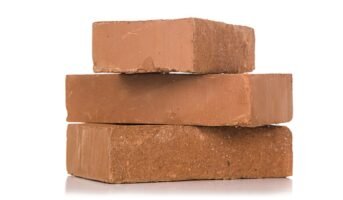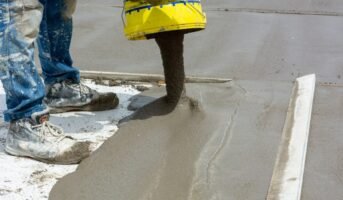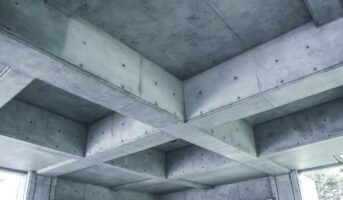With its many applications, Manning’s formula has become a standard in the field of water science. There are a wide variety of uses for this formula, including calculating the flows in an open channel, determining the frictional forces in a channel, deriving the capacities of a pipeline, and verifying the accuracy of an area-velocity pressure gauge.
How can a single equation handle so much? In this article, we will cover the origins of Manning’s formula before delving into the specifics of how it operates and its usage in different water resource applications.
See also: BOD and COD Monitoring in Wastewater
Manning’s formula: Background
Robert Manning established what is now known as Manning’s formula in the latter 19th century. His accounting training led him to look for a bare-bones explanation that accurately explained the water resource facts. Manning’s formula explains the actual connection between the velocity through a conduit, the channel shape, the gradient, and an impact resistance represented by Manning n.
This formula is considered empirical since it is established by curve fitting to observable data rather than being dependent on basic principles generated from science and physics concepts. Using an empirically derived formula in engineering is perfectly acceptable, provided that its limits are recognised.
Manning’s formula: Understanding Manning’s formula
The Manning formula may be expressed in various formats. The original purpose of the equation was to represent the velocity inside a pipe; however, expressing it as a flow is typically more convenient for hydraulic calculations. Here is a popular and practical version of the Manning formula:
Let’s have a look at each part of the formula in more detail:
-
Q
Q represents the volumetric flow rate in cubic feet per second. Since V * A is identical to flow via the continuity equation, it may be used as an alternative form for the left side of the formula. By eliminating the area (A) from the right-hand side of the equation, the velocity (V) may be calculated instead of the flow (Q).
-
1.49
Factor 1.49 is used to convert between units. You may disregard this coefficient altogether (or just set it to 1) for metric units since it is unnecessary.
-
n
The letter n denotes Manning’s roughness factor. This is an unquantified number that reflects the roughness factor of the channel. There are no units associated with this value.
-
A
Flow cross-sectional area, denoted by the letter “A,” is measured in square feet. As mentioned before, the flow can be calculated by removing the area from the formula’s right-hand side, but the velocity may be calculated directly from the equation.
-
R
R represents the hydraulic radius in feet. This is the equation variable that accounts for channel shape. The hydraulic radius is calculated by dividing the flow’s area by its wetted perimeter. The wetted perimeter is essentially the extent of the conduit surrounding the perimeter and is thus wet.
-
S
The energy gradient’s slope, S, is given in raw slope (not percentage) form, in feet per foot. To calculate the depth of uniform flow in an open channel (where the depth is constant at various points along the length of the channel), it is usual practice to replace the slope of the channel with the energy slope.
The rate of energy loss due to friction inside the conduit is represented by its slope in the general form. This generic variant of the equation may be used to examine the behaviour of conduits subject to non-uniform flows. This is elaborated on further down.
Manning’s formula: Significance of the Manning n value
The roughness factor of the channel is represented by Manning’s n value, which is a coefficient with no units. A greater price is placed on rougher channels with more friction, whereas a lower price is placed on smoother channels with less friction.
If everything else remained the same, a larger n number, representing greater conduit friction, would lead to a lower flow rate. This would be the case even if there were no other differences. This should make logical sense, given that increased friction has a tendency to slow down the movement of the fluid.
Due to the empirical nature of Manning’s formula, the results for Manning n are determined by experimentation and observation. Choosing the appropriate Manning n for a given channel is not governed by any universal law or scientific formula. Examining the conduit properties and then using a table to get the Manning n is the standard practice.
The following are a few examples of popular channel types and the Manning number that results from them.
- A Manning n value of 0.013 is assigned to the concrete pipe.
- The Manning number of the channel, filled with cobblestones and huge rocks, is 0.050.
- A floodplain with medium to deep brush cover has a Manning n value of 0.100.
Manning’s formula: Typical applications
The Manning formula is very flexible and may be used in various contexts, including those involving water resource management. The following is a list of several popular applications of the formula.
Open Channel Flow
When analysing open channel flow, the Manning formula is often used. The formula is often used to determine the uniform flow depth. However, the equation may be applied more widely to determine the friction in a channel and the open channel’s flow characteristics.
If you know the values for the right side of the Manning formula at one location in the channel, you may use it to figure out the depths at another location in the channel. These parameters are used to calculate the energy gradient slope using the Manning formula.
Calculating Uniform Flow Depth
The occurrence of uniform flow characterises open channel flow. To have uniform flow, the water level in the channel must be constant at all points. This also indicates that the channel’s gravitational and kinetic forces are in harmony.
Whenever the flow is allowed to extend sufficiently away from the hydraulic governing structure, the depth of the flow will eventually become uniform. When the channel’s slope is assumed to be equal to the energy gradient, Manning’s formula may be used to calculate the depth of a uniform flow.
Calculating Full Pipe Capacity
Manning’s formula may be used to analyse flow in entire pipes, not only open channels, which is where it is most often employed. For a particular pipe diameter and pipe gradient, the formula is often used to determine the maximum flow rate possible through the pipe.
With Manning’s formula, you may achieve this by fixing the slope to be the same as the pipe’s slope and then calculating the discharge rate for a particular pipe diameter. To determine the occupancy of a pipe running under gravity circumstances, the inclination of the energy differential must be equivalent to the ratio of the pipe, and the flow rate must be calculated such that the pipe remains full throughout its length.
Calculating Head Losses in Full Pipes
Manning’s formula may also be employed to determine pressure loss in a channel that is at full capacity. The entire pipe geometry is used to generate the channel geometry, which results in the channel geometry having fewer components.
The inclination energy differential may be expressed in terms of the flow rate, Manning number, hydraulic diameter, and pipe area by rearrangement of the Manning equation. The energy gradient slope is then determined by plugging these values into the corresponding equation.
The pressure loss in the conduit is calculated by multiplying the slope by the pipe’s length.
Performance Evaluation of an AV Flow Metre
The area-velocity flow metre’s accuracy may be evaluated using Manning’s formula. A correlation matrix of the flow versus depth measurements obtained from the metre is generated to do this. Then the outcomes of the correlation matrix are compared to the findings obtained using Manning’s formula.
FAQs:
What is the purpose of Manning's formula?
The purpose of Manning's formula is to determine the velocity of water moving through a channel.
What is R in Manning's formula?
The hydraulic radius is denoted by the symbol R, which is written out in feet. This part of the equation represents the channel geometry, and it is a variable. The area of the flow is divided by its wetted perimeter, and the result is the hydraulic radius of the flow.
What is n roughness coefficient in Manning's formula?
Hydrological calculations rely heavily on the Manning roughness coefficient, n, which describes the amount of energy dissipated in open channels. It is often used in the estimation of flood water levels and discharge.
How precise is Manning's formula?
Manning's formula is +/- 10% to 20% accurate under optimal conditions. Accuracy of +/- 25% to 30% is more plausible, with inaccuracies of 50% or even more conceivable if caution is not taken due to the aforementioned variations in measuring conditions.
What factors influence Manning's coefficient?
Cross-sectional geometry, boundary roughness, channel foliage, channel inconsistency, channel orientation, silting and scouring, blockage, stage and discharge, seasonal variation, and suspended material all have a role in determining the Manning roughness coefficient.
Housing News Desk is the news desk of leading online real estate portal, Housing.com. Housing News Desk focuses on a variety of topics such as real estate laws, taxes, current news, property trends, home loans, rentals, décor, green homes, home improvement, etc. The main objective of the news desk, is to cover the real estate sector from the perspective of providing information that is useful to the end-user.
Facebook: https://www.facebook.com/housing.com/
Twitter: https://twitter.com/Housing
Email: [email protected]











